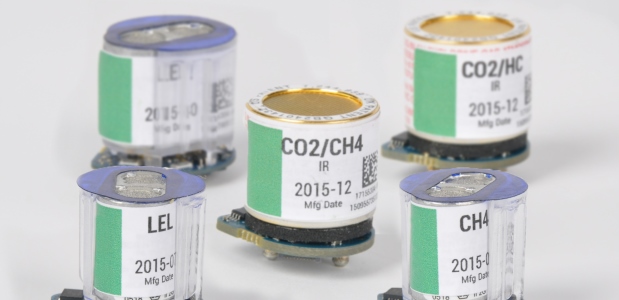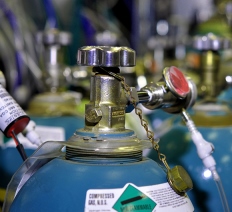
Are Poisons and Inhibitors Lurking in Your Workspace?
Just because a poison or inhibitor wasn't applied directly to the instrument doesn’t mean that it may not have been exposed to something while in a tool box, storage locker, or anywhere else gas detection equipment may be stored.
- By Ryan Thompson
- Apr 01, 2018
The sensors inside your personal gas detector are meant to be exposed to toxic, corrosive, and explosive gases, but that doesn't mean they are infallible. Chemicals and vapors from everyday cleaners and lubricants and specialized chemicals can all act as poisons or inhibitors to different sensor types. One of the most negatively affected is the catalytic bead LEL sensor. Having a catalytic bead LEL sensor in your personal gas monitor is standard in many applications, so being aware of what can act as a poison or inhibitor can be the difference between a fully functioning monitor and one that may not have the ability to alert you when in the presence of combustible gas.
Although it is one of the most common types of LEL sensors, the way in which a catalytic bead LEL sensor detects gas is one of the main reasons it is so susceptible to poisons and inhibitors. Internally, a catalytic bead sensor is going to burn the gas that comes in contact with the bead and detect a change in temperature. This change in temperature is what is then translated into the reading you see on your screen. When poisons and inhibitors come in contact with this bead, they can completely prevent the gas from burning, or may prohibit the bead from burning as much as it would have, which in turn, can prevent a readout from being available on your screen. Poisons and inhibitors can have a similar affect, but the way in which they affect the sensor and the sources they come from are different.
 Some of the most common poisons are silicone-based products, lubricants, gas additives, lead, and sulfur compounds. As soon as an instrument with a catalytic bead sensor is powered on, that bead starts to heat up. If any of these poisons come in contact with that heated bead, they instantly melt and head to the surface. Once these poisons encapsulate the catalytic bead, there is no way to remove them and the sensor must be replaced. Since this sensor now has a layer of the melted poison substance surrounding it, it is no longer able to burn any combustible gas that may come in contact with it and can no longer provide a reading. If an instrument is not regularly calibrated and bump tested, there would be no way to identify if it has been poisoned or not. This can put a user in a dangerous situation as they could have a meter in a combustible environment that is not providing a reading due to the bead being blocked.
Some of the most common poisons are silicone-based products, lubricants, gas additives, lead, and sulfur compounds. As soon as an instrument with a catalytic bead sensor is powered on, that bead starts to heat up. If any of these poisons come in contact with that heated bead, they instantly melt and head to the surface. Once these poisons encapsulate the catalytic bead, there is no way to remove them and the sensor must be replaced. Since this sensor now has a layer of the melted poison substance surrounding it, it is no longer able to burn any combustible gas that may come in contact with it and can no longer provide a reading. If an instrument is not regularly calibrated and bump tested, there would be no way to identify if it has been poisoned or not. This can put a user in a dangerous situation as they could have a meter in a combustible environment that is not providing a reading due to the bead being blocked.
If there is any thought that the LEL sensor may have been poisoned, it should be calibrated immediately to make sure it is in working order. If the sensor can read the calibration gas and provide a readout during this process, then it will be able to detect gas in the field. If the sensor is poisoned, it will not be able to read the calibration gas applied and will give the user a failed calibration.
Inhibitors, while not as destructive as poisons, still have a negative effect on the sensor. If combustible gases and inhibitors are present at the same time, the catalytic bead sensor may not detect the combustible gas. Inhibitors can desensitize the bead and may shorten its life span, but after a calibration and bump test, the sensor may still be in a usable state. Some of the most common inhibitors would be halogenated compounds as well as anything containing astatine, bromine, fluorine, chlorine, and iodine. If an instrument has been exposed to any inhibitors, a calibration is recommended to make sure the instrument is still in working order. When the catalytic bead burns the gas from the calibration cylinder, it will also burn off some of the inhibiting material that may have been stuck on. If the bead is repeatedly desensitized by inhibitors, or comes in contact with a large quantity, it may not recover, resulting in a failed calibration.
Staying on the Safe Side
In some instances it may be obvious that the sensor was exposed to a poison or inhibitor, but this might not always be the case. Many lubricants or silicone-based products come in some form of spray that can bounce off of the surface it may be applied to, and if standing too close, can easily come in contact with a personal gas detector a user is wearing. A lot of these products also take some time to dry, releasing chemicals and vapors in the process. Storage also has to be taken into consideration. Just because a poison or inhibitor wasn't applied directly to the instrument doesn't mean that it may not have been exposed to something while in a tool box, storage locker, or anywhere else gas detection equipment may be stored.
Some of the most common poisons and inhibitors are listed above, but this does not limit the list to what has been stated here. By starting each day with a calibration or bump test and calibrating your instrument any time you think it has come in contact with anything that may have a negative effect, you are ensuring that your instrument is in working order and will detect gas that may be present. If a meter was affected by a substance, a failed calibration will indicate this instrument is no longer in working order and will need attention.
This article originally appeared in the April 2018 issue of Occupational Health & Safety.